Ross Murch
A Hybrid Transmitting and Reflecting Beyond Diagonal Reconfigurable Intelligent Surface with Independent Beam Control and Power Splitting
Apr 13, 2025Abstract:A hybrid transmitting and reflecting beyond diagonal reconfigurable intelligent surface (BD-RIS) design is proposed. Operating in the same aperture, frequency band and polarization, the proposed BD-RIS features independent beam steering control of its reflected and transmitted waves. In addition it provides a hybrid mode with both reflected and transmitted waves using tunable power splitting between beams. The BD-RIS comprises two phase reconfigurable antenna arrays interconnected by an array of tunable two-port power splitters. The two-port power splitter in each BD-RIS cell is built upon a varactor in parallel with a bias inductor to exert tunable impedance variations on transmission lines. Provided with variable reverse DC voltages, the two-port power splitter can control the power ratio of S11 over S21 from -20 dB to 20 dB, thus allowing tunable power splitting. Each antenna is 2-bit phase reconfigurable with 200 MHz bandwidth at 2.4 GHz so that each cell of BD-RIS can also achieve independent reflection and transmission phase control. To characterize and optimize the electromagnetic response of the proposed BD-RIS design, a Th\'evenin equivalent model and corresponding analytical method is provided. A BD-RIS with 4 by 4 cells was also prototyped and tested. Experiments show that in reflection and transmission mode, the fabricated BD-RIS can realize beam steering in reflection and transmission space, respectively. It is also verified that when operating in hybrid mode, the BD-RIS enables independent beam steering of the reflected and transmitted waves. This work helps fill the gap between realizing practical hardware design and establishing an accurate physical model for the hybrid transmitting and reflecting BD-RIS, enabling hybrid transmitting and reflecting BD-RIS assisted wireless communications.
Turbocharging Fluid Antenna Multiple Access
Apr 06, 2025Abstract:We revisit the massive connectivity challenge by considering the case where no CSI is available at the BS and no precoding is used. In this situation, inter-user interference (IUI) mitigation can only be performed at the user terminal (UT) side. Leveraging the position flexibility of fluid antenna system (FAS), we adopt a fluid antenna multiple access (FAMA) approach that exploits the interference signal fluctuation in the spatial domain. Specifically, we assume that we have N spatially correlated received signals per symbol duration from FAS. Our main approach uses a simple heuristic port shortlisting method that identifies promising ports to obtain favourable received signals that can be combined via maximum ratio combining (MRC) to form the received output signal for final detection. On top of this, a pre-trained deep joint source channel coding (JSCC) scheme is employed, which together with a diffusion-based denoising model (MixDDPM) at the UT side, can improve the IUI immunity. We refer to the proposed scheme as turbo FAMA. Simulation results show that with a physical FAS size of 20 wavelengths at each UT transmitting quaternary phase shift keying (QPSK) symbols, fast FAMA can support 50 users while turbo FAMA can handle up to 200 users if the required symbol error rate (SER) is 10 2. If a higher error tolerance is acceptable, say SER at 01, turbo FAMA can even serve up to 1000 users but fast FAMA is only able to handle 160 users, all remarkably achieved without CSI at the BS.
STAR-RIS-Assisted Cell-Free Massive MIMO with Multi-antenna Users and Hardware Impairments Over Correlated Rayleigh Fading Channels
Mar 17, 2025Abstract:Integrating cell-free massive multiple-input multiple-output (MIMO) with simultaneous transmitting and reflecting reconfigurable intelligent surfaces (STAR-RISs) can provide ubiquitous connectivity and enhance coverage. This paper explores a STAR-RIS-assisted cell-free massive MIMO system featuring multi-antenna users, multi-antenna access points (APs), and multi-element STAR-RISs, accounting for transceiver hardware impairments. We first establish the system model of STAR-RIS-assisted cell-free massive MIMO systems with multi-antenna users. Subsequently, we analyze two uplink implementations: local processing and centralized decoding (Level 1), and fully centralized processing (Level 2), both implementations incorporating hardware impairments. We study the local and global minimum mean square error (MMSE) combining schemes to maximize the uplink spectral efficiency (SE) for Level 1 and Level 2, respectively. The MMSE-based successive interference cancellation detector is utilized to compute the uplink SE. We introduce the optimal large-scale fading decoding at the central processing unit and derive closed-form SE expressions utilizing maximum ratio combining at APs for Level 1. Our numerical results reveal that hardware impairments negatively affect SE performance, particularly at the user end. However, this degradation can be mitigated by increasing the number of user antennas. Enhancing the number of APs and STAR-RIS elements also improves performance and mitigates performance degradation. Notably, unlike conventional results based on direct links, our findings show that Level 2 consistently outperforms Level 1 with arbitrary combining schemes for the proposed STAR-RIS-assisted system.
Phase-mismatched STAR-RIS with FAS-assisted RSMA Users
Mar 12, 2025Abstract:This paper considers communication between a base station (BS) to two users, each from one side of a simultaneously transmitting-reflecting reconfigurable intelligent surface (STAR-RIS) in the absence of a direct link. Rate-splitting multiple access (RSMA) strategy is employed and the STAR-RIS is subjected to phase errors. The users are equipped with a planar fluid antenna system (FAS) with position reconfigurability for spatial diversity. First, we derive the distribution of the equivalent channel gain at the FAS-equipped users, characterized by a t-distribution. We then obtain analytical expressions for the outage probability (OP) and average capacity (AC), with the latter obtained via a heuristic approach. Our findings highlight the potential of FAS to mitigate phase imperfections in STAR-RIS-assisted communications, significantly enhancing system performance compared to traditional antenna systems (TAS). Also, we quantify the impact of practical phase errors on system efficiency, emphasizing the importance of robust strategies for next-generation wireless networks.
A First Look at the Performance Enhancement Potential of Fluid Reconfigurable Intelligent Surface
Feb 24, 2025Abstract:The fluid antenna concept represents shape-flexible and position-flexible antenna technologies designed to enhance wireless communication applications. In this paper, we apply this concept to reconfigurable intelligent surfaces (RISs), introducing fluid RIS (FRIS), where each tunably reflecting element becomes a fluid element with additional position reconfigurability. This new paradigm is referred to as fluid RIS (FRIS). We investigate an FRIS-programmable wireless channel, where the fluid meta-surface is divided into non-overlapping subareas, each acting as a fluid element that can dynamically adjust both its position and phase shift of the reflected signal. We first analyze the single-user, single-input single-output (SU-SISO) channel, in which a single-antenna transmitter communicates with a single-antenna receiver via an FRIS. The achievable rate is maximized by optimizing the fluid elements using a particle swarm optimization (PSO)- based approach. Next, we extend our analysis to the multi-user, multiple-input single-output (MU-MISO) case, where a multi-antenna base station (BS) transmits individual data streams to multiple single-antenna users via an FRIS. In this case, the joint optimization of the positions and phase shifts of the FRIS element, as well as the BS precoding to maximize the sum-rate is studied. To solve the problem, a combination of techniques including PSO, semi-definite relaxation (SDR), and minimum mean square error (MMSE) is proposed. Numerical results demonstrate that the proposed FRIS approach significantly outperforms conventional RIS configurations in terms of achievable rate performance.
Downlink OFDM-FAMA in 5G-NR Systems
Jan 12, 2025Abstract:Fluid antenna multiple access (FAMA), enabled by the fluid antenna system (FAS), offers a new and straightforward solution to massive connectivity. Previous results on FAMA were primarily based on narrowband channels. This paper studies the adoption of FAMA within the fifth-generation (5G) orthogonal frequency division multiplexing (OFDM) framework, referred to as OFDM-FAMA, and evaluate its performance in broadband multipath channels. We first design the OFDM-FAMA system, taking into account 5G channel coding and OFDM modulation. Then the system's achievable rate is analyzed, and an algorithm to approximate the FAS configuration at each user is proposed based on the rate. Extensive link-level simulation results reveal that OFDM-FAMA can significantly improve the multiplexing gain over the OFDM system with fixed-position antenna (FPA) users, especially when robust channel coding is applied and the number of radio-frequency (RF) chains at each user is small.
Performance Analysis of STAR-RIS-Assisted Cell-Free Massive MIMO Systems with Electromagnetic Interference and Phase Errors
Nov 21, 2024Abstract:Simultaneous Transmitting and Reflecting Reconfigurable Intelligent Surfaces (STAR-RISs) are being explored for the next generation of sixth-generation (6G) networks. A promising configuration for their deployment is within cell-free massive multiple-input multiple-output (MIMO) systems. However, despite the advantages that STAR-RISs could bring, challenges such as electromagnetic interference (EMI) and phase errors may lead to significant performance degradation. In this paper, we investigate the impact of EMI and phase errors on STAR-RIS-assisted cell-free massive MIMO systems and propose techniques to mitigate these effects. We introduce a novel projected gradient descent (GD) algorithm for STAR-RIS coefficient matrix design by minimizing the local channel estimation normalised mean square error. We also derive the closed-form expressions of the uplink and downlink spectral efficiency (SE) to analyze system performance with EMI and phase errors, in which fractional power control methods are applied for performance improvement. The results reveal that the projected GD algorithm can effectively tackle EMI and phase errors to improve estimation accuracy and compensate for performance degradation with nearly $10\%\sim20\%$ SE improvement. Moreover, increasing access points (APs), antennas per AP, and STAR-RIS elements can also improve SE performance. Applying STAR-RIS in the proposed system achieves a larger $25\%$-likely SE than conventional RISs. However, the advantages of employing more STAR-RIS elements are reduced when EMI is severe.
Antenna Coding Empowered by Pixel Antennas
Nov 11, 2024



Abstract:Pixel antennas, based on discretizing a continuous radiation surface into small elements called pixels, are a flexible reconfigurable antenna technology. By controlling the connections between pixels via switches, the characteristics of pixel antennas can be adjusted to enhance the wireless channel. Inspired by this, we propose a novel technique denoted antenna coding empowered by pixel antennas. We first derive a physical and electromagnetic based communication model for pixel antennas using microwave multiport network theory and beamspace channel representation. With the model, we optimize the antenna coding to maximize the channel gain in a single-input single-output (SISO) pixel antenna system and develop a codebook design for antenna coding to reduce the computational complexity. We analyze the average channel gain of SISO pixel antenna system and derive the corresponding upper bound. In addition, we jointly optimize the antenna coding and transmit signal covariance matrix to maximize the channel capacity in a multiple-input multiple-output (MIMO) pixel antenna system. Simulation results show that using pixel antennas can enhance the average channel gain by up to 5.4 times and channel capacity by up to 3.1 times, demonstrating the significant potential of pixel antennas as a new dimension to design and optimize wireless communication systems.
A Tutorial on Fluid Antenna System for 6G Networks: Encompassing Communication Theory, Optimization Methods and Hardware Designs
Jul 03, 2024
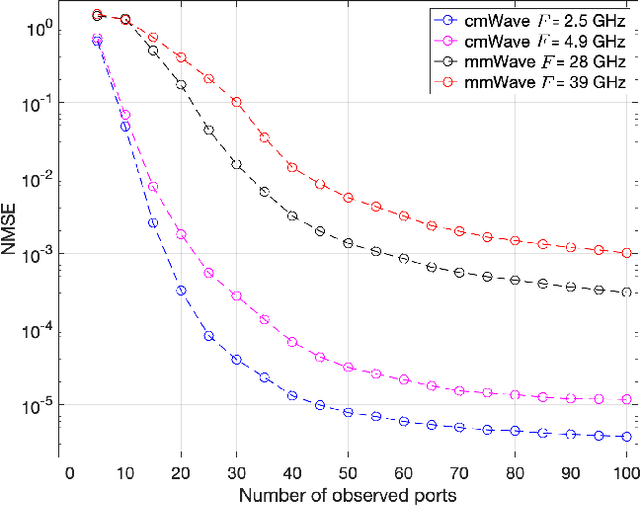
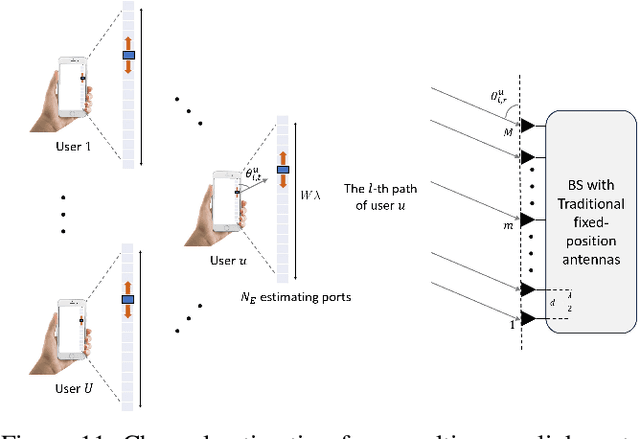
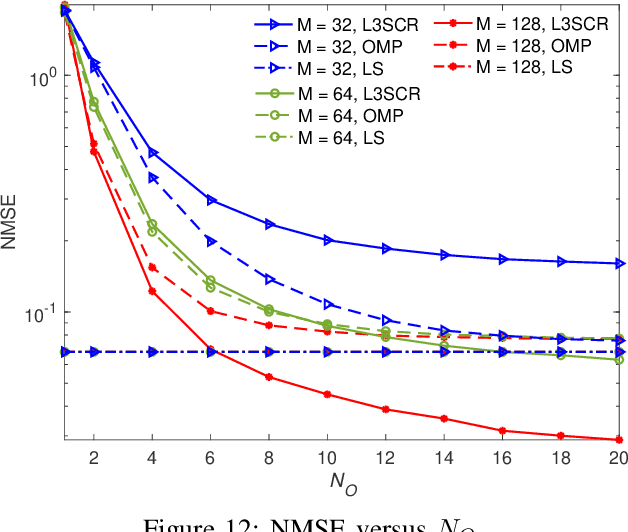
Abstract:The advent of the sixth-generation (6G) networks presents another round of revolution for the mobile communication landscape, promising an immersive experience, robust reliability, minimal latency, extreme connectivity, ubiquitous coverage, and capabilities beyond communication, including intelligence and sensing. To achieve these ambitious goals, it is apparent that 6G networks need to incorporate the state-of-the-art technologies. One of the technologies that has garnered rising interest is fluid antenna system (FAS) which represents any software-controllable fluidic, conductive, or dielectric structure capable of dynamically changing its shape and position to reconfigure essential radio-frequency (RF) characteristics. Compared to traditional antenna systems (TASs) with fixed-position radiating elements, the core idea of FAS revolves around the unique flexibility of reconfiguring the radiating elements within a given space. One recent driver of FAS is the recognition of its position-flexibility as a new degree of freedom (dof) to harness diversity and multiplexing gains. In this paper, we provide a comprehensive tutorial, covering channel modeling, signal processing and estimation methods, information-theoretic insights, new multiple access techniques, and hardware designs. Moreover, we delineate the challenges of FAS and explore the potential of using FAS to improve the performance of other contemporary technologies. By providing insights and guidance, this tutorial paper serves to inspire researchers to explore new horizons and fully unleash the potential of FAS.
A Pixel-based Reconfigurable Antenna Design for Fluid Antenna Systems
Jun 08, 2024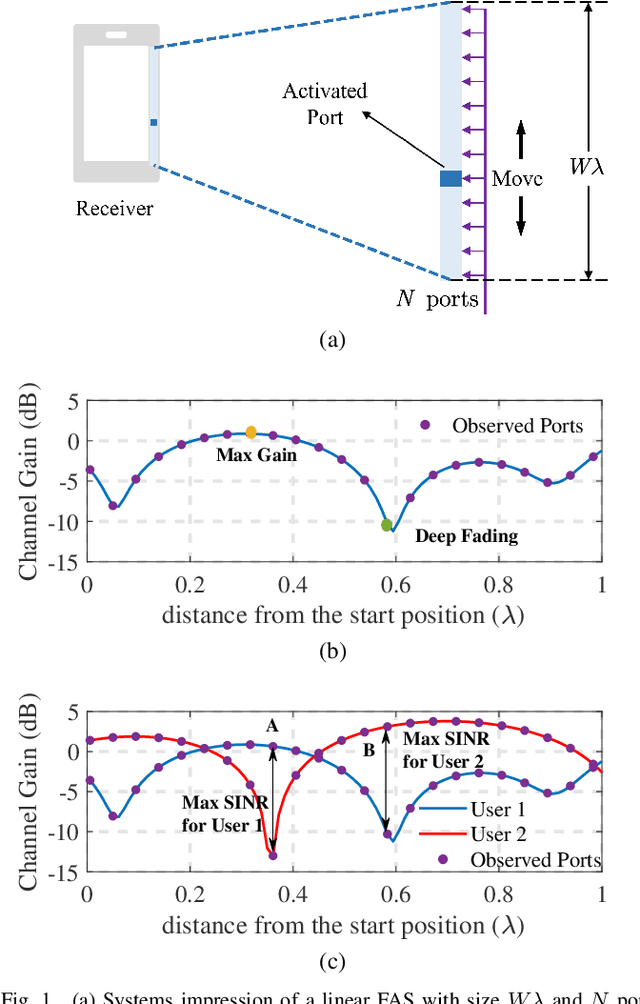
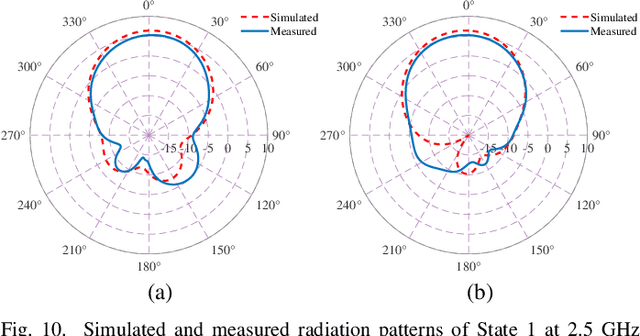
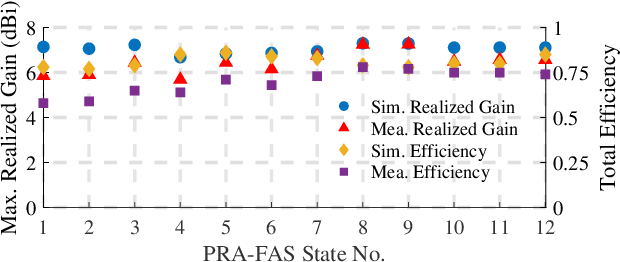
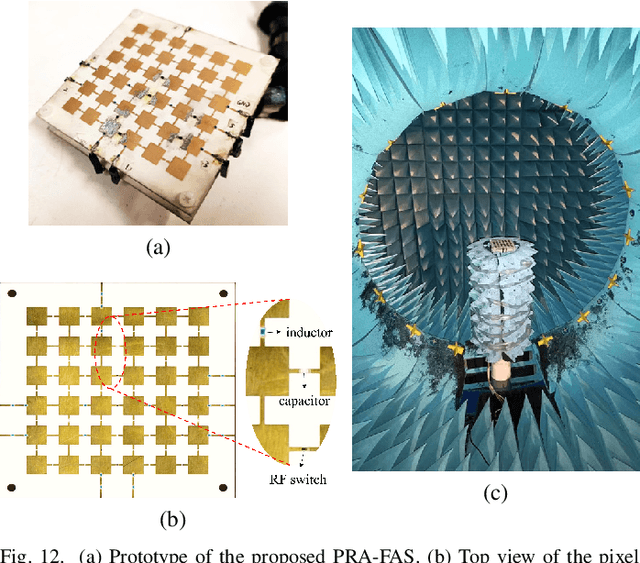
Abstract:Fluid Antenna Systems (FASs) have recently been proposed for enhancing the performance of wireless communication. Previous antenna designs to meet the requirements of FAS have been based on mechanically movable or liquid antennas and therefore have limited reconfiguration speeds. In this paper, we propose a design for a pixel-based reconfigurable antenna (PRA) that meets the requirements of FAS and the required switching speed. It can provide 12 FAS ports across 1/2 wavelength and consists of an E-slot patch antenna and an upper reconfigurable pixel layer with 6 RF switches. Simulation and experimental results from a prototype operating at 2.5 GHz demonstrate that the design can meet the requirements of FAS including port correlation with matched impedance.
 Add to Chrome
Add to Chrome Add to Firefox
Add to Firefox Add to Edge
Add to Edge